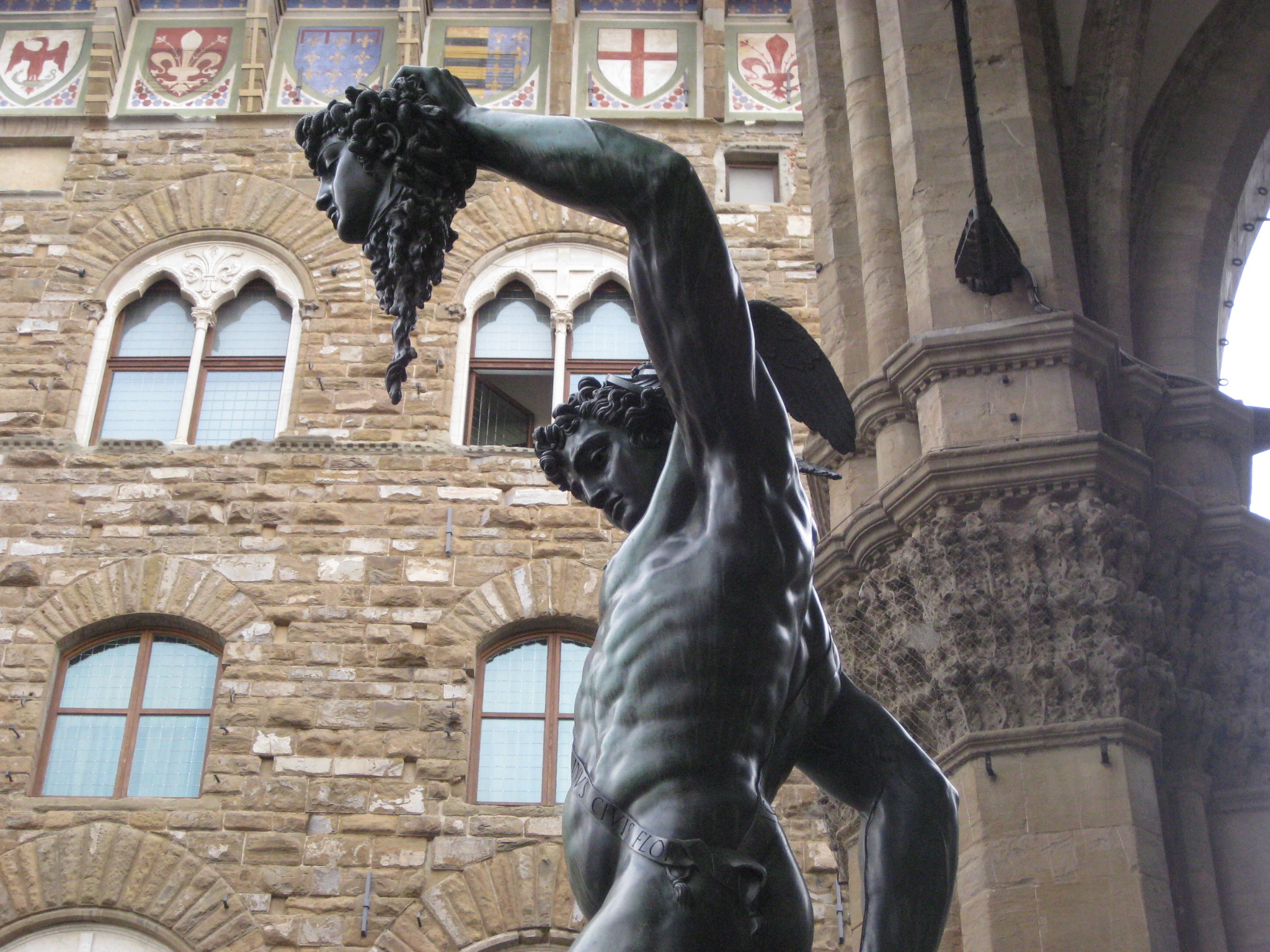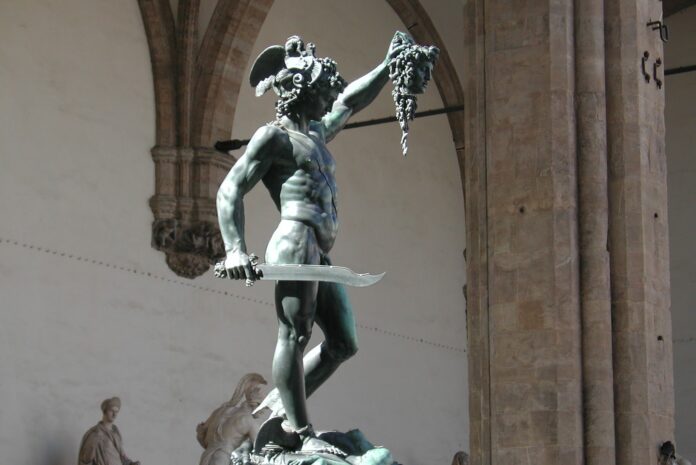In the heart of Florence’s Piazza della Signoria stands a stunning bronze sculpture, often overshadowed by the throngs of tourists drawn to Michelangelo’s iconic David. However, this piece, Benvenuto Cellini’s Perseus with the Head of Medusa, is a masterpiece in its own right, filled with a compelling story that has fascinated art lovers for centuries.

The Sculptor and His Masterpiece
Benvenuto Cellini, a celebrated 16th-century Florentine artist, crafted this striking sculpture. Known as a Renaissance polymath, Cellini’s exceptional metalworking skills and larger-than-life personality left a lasting impact. His autobiography, a vivid recounting of his adventures and misadventures, offers an intriguing look into the world that influenced this remarkable work of art.
The Triumphant Pose of Perseus
Cellini’s Perseus with the Head of Medusa depicts the Greek hero Perseus standing victoriously, holding the severed head of the gorgon Medusa. The dark, ominous, and blood-stained bronze of the sculpture captures the raw power and drama of the mythological tale. Positioned opposite Michelangelo’s David, the two sculptures create a striking contrast, with Perseus’s dynamic and heroic pose standing in stark contrast to David’s contemplative and introspective stance.

The Symbolism and Significance
The placement of Perseus opposite David is intentional, reflecting the multi-layered symbolism in Cellini’s work. The Perseus sculpture symbolizes the power of the Medici family, Florence’s ruling dynasty, who commissioned the piece as a symbol of their political and military strength. The severed head of Medusa, representing evil and chaos, serves as a metaphor for the Medici’s triumph over their enemies.
The Challenges and Triumphs of the Artistic Process
Creating this masterpiece was a challenging endeavor. Cellini faced numerous technical and artistic hurdles, from the intricate metalworking techniques required to the political maneuverings necessary to secure the commission. His autobiography reveals the artist’s meticulous attention to detail and his unwavering determination to bring his vision to life despite the obstacles he encountered.

The Enduring Legacy of the Perseus
Despite its initially mixed reception, Perseus with the Head of Medusa has become one of the most celebrated works of art in Florence, and indeed, the world. Its enduring legacy is a testament to Cellini’s artistic genius and the powerful mythological tale it represents. Today, the sculpture continues to captivate and inspire, drawing visitors from around the globe to admire its technical virtuosity and symbolic depth.

In the shadow of Michelangelo’s iconic David, Benvenuto Cellini’s Perseus with the Head of Medusa stands as a testament to the richness and complexity of Florentine art and culture. This often-overlooked masterpiece deserves recognition for its technical brilliance, symbolic significance, and the captivating story behind its creation. Through Cellini’s remarkable sculpture, we gain a deeper appreciation for the artistic and cultural legacy that continues to shape the landscape of Florence and beyond.




